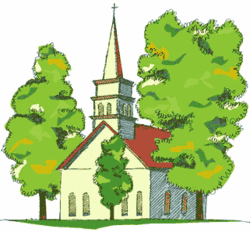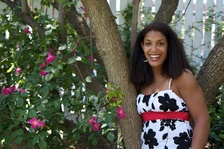We are members of Westerly Road Church, a non-denominational
church in Princeton, New Jersey. The church is trying to construct a new
building a few miles away from our current location because zoning laws
prohibit us from expanding our facility to accommodate the hundreds of members
of our community who gather daily and weekly on church property. We’ve been
through three rounds of town meetings, with a fourth on its way. Although the
new plans comply with the laws of the township, environmental groups have
raised strenuous objections to the plans to build.
I’m sympathetic to environmental causes. I was the President
of my high school “environmental awareness movement” and editor-in-chief of the
“Lorax,” the school newspaper devoted to environmental causes. We recycle and
use energy efficient light bulbs. We installed geothermal heat in our new
house. We drive a Prius.
But this dispute between our church and the environmental
groups has highlighted a basic, and perhaps irreconcilable, difference in how Christians
and environmentalists approach the natural world. Christians see the natural
world as God’s good creation, and we understand ourselves as “stewards” of that
creation, entrusted with the responsibility of caring for the environment in
which we live. And yet, Christians also understand human beings as the most
significant part of the creation, created “in God’s image” (see Genesis 1:26-27).
Many Christians believe in evolution, and yet a Christian
understanding of evolution diverges from the biology textbooks once human beings
come on the stage. An element of faith comes in, faith that God intervened in
the creation of humans in such a way that we are distinct from the rest of the
creation, the only ones “in the image of God.” The mainstream of contemporary
environmentalism sees no distinction. In fact, it often seems to forget about
human beings altogether.
In Eugene Peterson’s book Christ Plays in Ten Thousand Places, he writes of a visit he took
with his family to a Yellowstone National Park. In keeping with the rules: “leave
nothing but footprints, take nothing but pictures,” when Peterson saw a little
girl picking flowers, he yelled, “Don’t pick the flowers!” In his description,
“the poor little girl, terrorized by my bark, dropped the flowers and looked at
me with total bewilderment and dismay, her face clouding over and then spilling
out tears.” He goes on, “How could I be so selective in my sense of kinship
with creation? How did it happen that I felt so sensitive to the fringed
gentian that had been formed out of the same dust as me, and so insensitive to
the little girl also formed out of that same dust…?”
I’m glad that there are environmental groups out there to
highlight the ways that humans manipulate and exploit the natural world. And
yet I wish that these same groups would acknowledge the place of the human in
the environment. Just as there is value for our community in preserving forests
and wetlands and clean water, there is value in preserving and creating human
community, in honoring the needs of human beings to gather together, to learn,
to laugh, to mourn, to worship.


